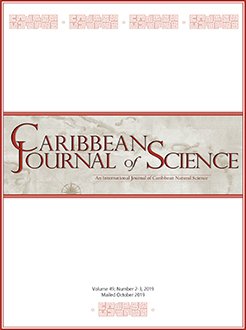Microplastics threaten the health of numerous marine organisms at all trophic levels. Currently, the topic is well studied among large predators. However, knowledge of microplastics present in organisms at lower trophic levels is poorly understood. The aim of this study was to assess the presence of microplastics within lower trophic level forage fishes. Four locations were sampled, classified into two categories based on human population: urban and non-urban. Five species were sampled: Striped Mullet (Mugil cephalus), Scaled Sardine (Harengula jaguana), Redfin Needlefish (Strongylura notata), Pinfish (Lagodon rhomboides), and Irish Pompano (Diapterus auratus). Of the 248 fish sampled, 99.6% contained microplastics, with a total of 2,126 pieces found in gastrointestinal tracts and livers. No significant difference in microplastics concentration among forage fish species was found. However, location had a significant effect on the frequency of microplastics found within the fishes, with the urban location near Miami, Florida having a higher frequency of occurrence compared with the other three sampled locations. This was the first study to assess microplastics within the forage fishes of southeastern Florida and provides further evidence that microplastics are pervasive throughout multiple trophic levels.
How to translate text using browser tools
25 April 2024
Extensive Microplastic Contamination in Southeastern Florida Forage Fishes
Maria McGirl,
D. Abigail Renegar,
David W. Kerstetter
ACCESS THE FULL ARTICLE

Caribbean Journal of Science
Vol. 54 • No. 1
July 2024
Vol. 54 • No. 1
July 2024




